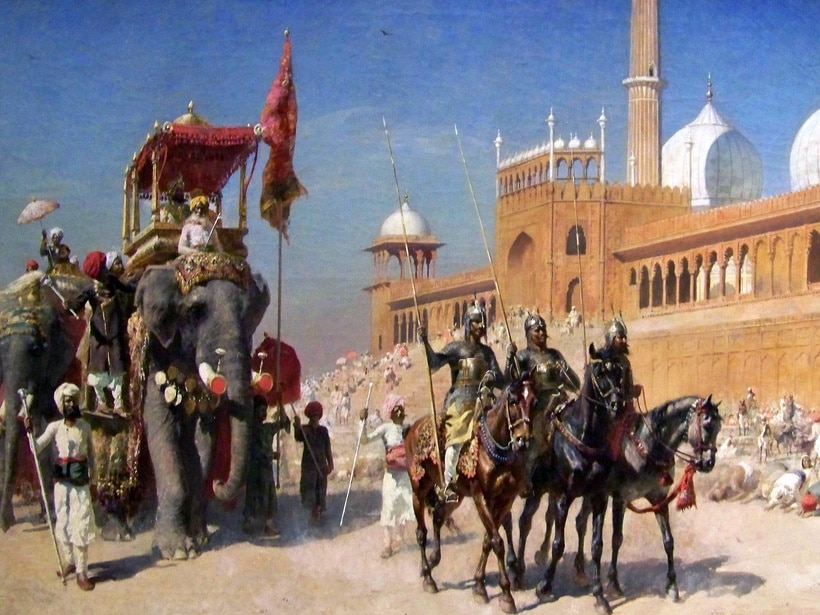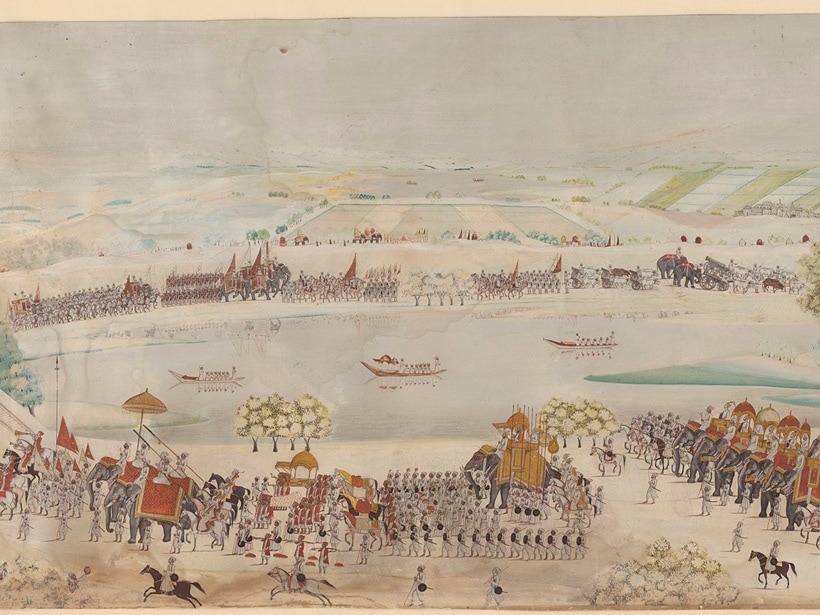(This is part of the series Make History Fun Again, where the writers introduce historical facts, events and personalities in a fun way for parents to start a conversation with their kids.)
By Archana Garodia Gupta and Shruti Garodia
We always think of Mughal emperors wallowing in luxuries at court and forget that they actually spent a great deal of their time on the move. Agra, Delhi, Fatehpur and Lahore were Mughal capitals only in a formal sense, for the capital was actually a moving camp with the emperor. The emperor would shuttle between his different centres, spend time in Kashmir to get away from the sweltering heat, and travel to different regions for war. A stationary life, it was not!
But the emperor didn’t just get up and leave. The entire court and government machinery moved with him, including records and treasure, harem and library. The emperor on the move was like an entire city going on a journey at once! The camp took days to cross a single point, and could have a 100,000 to 200,000 people attached to it.
The king and nobles marched with two sets of tents, so that while one set was being used, the other was sent ahead to set up for the next stop. Nearly 200 camels and 50 elephants were required to carry the royal tent and its furnishings!


The march would start with an incredible amount of fanfare. The heavy artillery always went first, and with it a boat was carried to ferry the monarch across any rivers. Then followed the baggage, laden on hundreds of pack animals. Then came 200 camels, loaded with silver rupees, and each camel carrying 480 pounds’ weight of silver; 100 camels loaded with gold coins, each carrying the same weight; 150 camels loaded with nets used in hunting tigers. In addition to these, there were 50 camels carrying water, each camel bearing two full metal vessels for royal use. Then the nobles went, on horses or elephants. People mention a long procession of elephants, and tens of thousands of horsemen and foot-soldiers who would accompany the emperor. This was followed by a marching band, drumming and trumpeting to announce the emperor’s arrival far and wide.


Water carriers would sprinkle the sandy paths to prevent dust from being kicked up. Servants would travel ahead with masses of white sheets, which would be used to cover any dead bodies (human or animal!) on the way, so that the emperor didn’t have to lay his eyes on them.
Also Read: 5 eccentric hobbies of the Mughals


A description of Akbar’s camp on the move:
“On an open ground they pitch the imperial seraglio (harem), the audience hall, and the Naqqarah Khanah (musicians’ gallery), all occupying a space the length of which is 1530 yards. To the right and left, and behind, is an open space of 360 yards, which no one but the guards are allowed to enter. Within it, at a distance of 100 yards to the left centre, are the tents of Maryam Makani (the Queen-Mother), Gulbadan Begam (Akbar’s aunt), and other chaste ladies, and the tents of Prince Daniyal; to the right, those of Prince Salim; and to the left, those of Prince Shah Murad. Behind their tents, at some distance, the offices and workshops are placed, and at a further distance of 30 yards behind them, at the four corners of the camp, the bazaars. The nobles are encamped without on all sides, according to their rank.
The Royal Camp looks like a great city travelling from place to place. For there are wanting neither bazaars, nor shops, nor markets, nor sports, nor pastimes, nor gold, nor silver; in short, all that could be looked for in a flourishing city is to be found in this camp.”
At the camp, the emperor would behave just as though he was at home, carrying out his normal business, holding audiences, indulging in his favourite past times and so on.
It seems strange, but other than the fact that they actually had to move from one day to the next, the emperor could carry on just as he would at home, because everything was at hand. They had no idea about the concepts of hardship, budgeting or making do. It is fun to try and imagine these emperors trying to navigate modern airports!
(For more fun journeys through India’s history, check out the newly released two-volume set, The History of India for Children Vol. 1 and Vol. 2, published by Hachette India, which is now available online and in bookstores across the country.)
Source: Read Full Article
